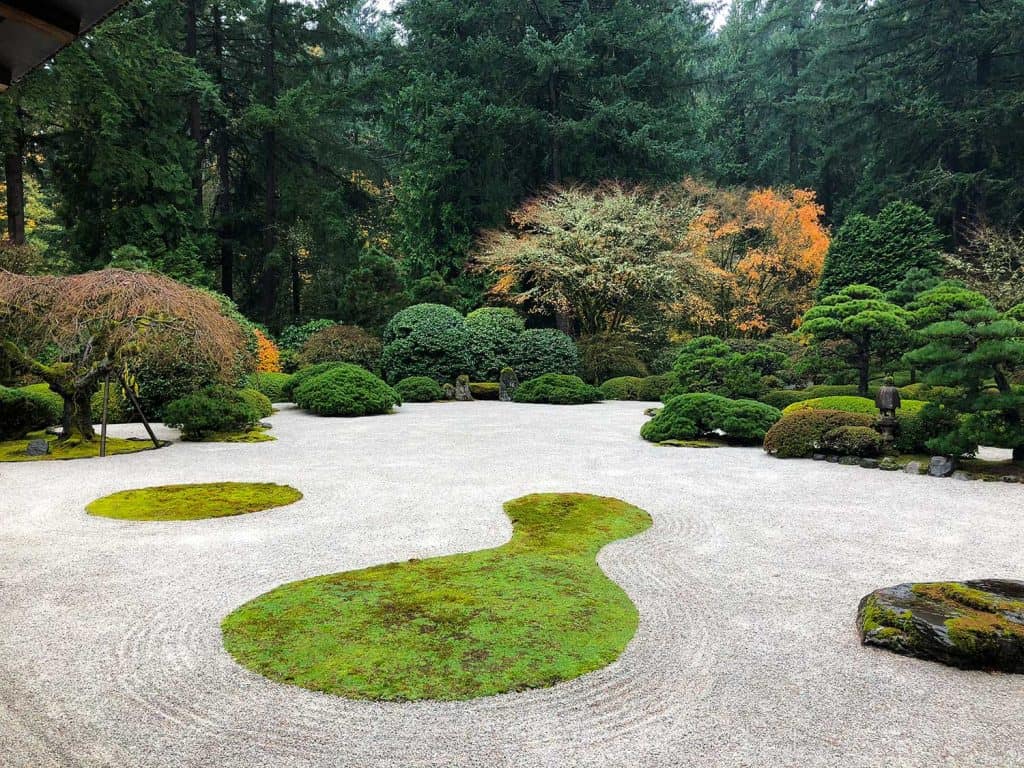A Zen garden is all about achieving peace, harmony and tranquility. The plant choices are crucial for setting the right relaxed mood. Unlike flashy flower gardens, plants in a Zen garden are more about graceful shapes, muted colors and soft textures.
Focus on Foliage
Flowers are sparse or non-existent in a true Zen garden. The emphasis is on harmonious evergreen foliage instead. Plants are kept pruned into soothing rounded or vertical shapes. Popular choices include:
- Bonsai – Sculpted miniature trees and shrubs
- Topiaries – Plants clipped into geometric or animal shapes
- Dwarf conifers – Slow growing conifers like hinoki cypress and mugo pine
- Japanese maples – Delicate trees with laceleaf or weeping forms
- Azaleas – Shrubs with glossy green leaves and subtle spring blooms
- Bamboo – Vertical stalks with rustling leaves
- Sedges – Grassy plants with arching foliage
- Creeping groundcovers – Low trailing plants like ajuga and vinca
- Ferns – Lacy fronds offer delicate textures
- Mosses – Soft carpets in shady spots
Colors are kept to neutral green tones that evoke natural serenity. Varieties with yellow, red or burgundy foliage should be used sparingly for accent.
Gradual Textures
Contrasts in size should be gradual to promote peaceful continuity. For example, place low groundcovers near medium shrubs backed by tall slender trees.
Natural Shapes
Plants should blend with the lay of the land and look like they belong. Formal hedges and topiaries should be limited to pair with the informal plantings.
Sparse Distribution
Leave breathing room between plants Mass groupings are avoided in favor of solitary specimens and small clusters
Simple Palette
Limit the plant selection to a few complementary species that evoke the elegant simplicity of a Zen garden.
By focusing on timeless plant choices that emphasize textures, shapes and muted colors, you can create an outdoor haven that promotes relaxation and mindfulness. A Zen garden plants the seeds of peace within your own backyard.
Top 11 Plants for a Japanese Zen Garden
FAQ
What do plants represent in a Zen garden?
What plants are used in Japanese garden?
What do Zen gardens contain?
What plants grow in a zen garden?
Bamboo, Japanese maples, bonsai trees, dwarf conifers, creeping ground cover, Japanese cryptomeria, and Japanese arborvitae are popular plants in a Zen garden. You’ll rarely find flowering plants. What do rocks represent in Zen gardens?
What are the different types of Zen gardens?
Both Japan and China have forms of Zen gardens. Japanese rock gardens or karesansui are usually dry gardens with gravel and stone used to emulate water. In general Japanese gardens are more minimalist. Chinese Zen gardens will sometimes have more structures and colourful ornamental elements, and will contain water.
What makes a good Zen garden?
Save my name, email, and website in this browser for the next time I comment. Zen gardens can provide a calming and restorative space. Successful design elements include gravel, sand, water and key plants like moss, bamboo and acer trees.
How to create a zen garden?
Another more simple way to create pockets of interest for your Zen garden ideas is to arrange miniature rockeries alongside your path, lawn, or gravelled space. Pick complementary tones and add a mixture of textures for visual appeal that mirrors the natural environment.
How do I choose a zen garden?
Think about the size of the space you have available, Zen gardens can vary in size from a small courtyard garden to a larger outdoor space. Ensure that your chosen location receives the appropriate amount of sunlight for the plants you intend to include in your garden.
What is a zen garden?
Zen gardens, also known as karesansui, are miniature versions of nature. The word “Zen” in Mandarin or Sanskrit means “meditative state”. These gardens were originally created by monks at temples of Zen Buddhism in Japan to imitate nature and aid meditation. In a Zen garden, natural elements are used to create a space for quiet contemplation.
- A Complete Guide to Caring for Yuki Cherry Blossom Shrub - January 23, 2025
- Identifying Red Hot Poker Seeds: What to Look For When Harvesting Torch Lily Pods - January 23, 2025
- A Complete Guide to Harvesting Evening Primrose Seeds - January 23, 2025

